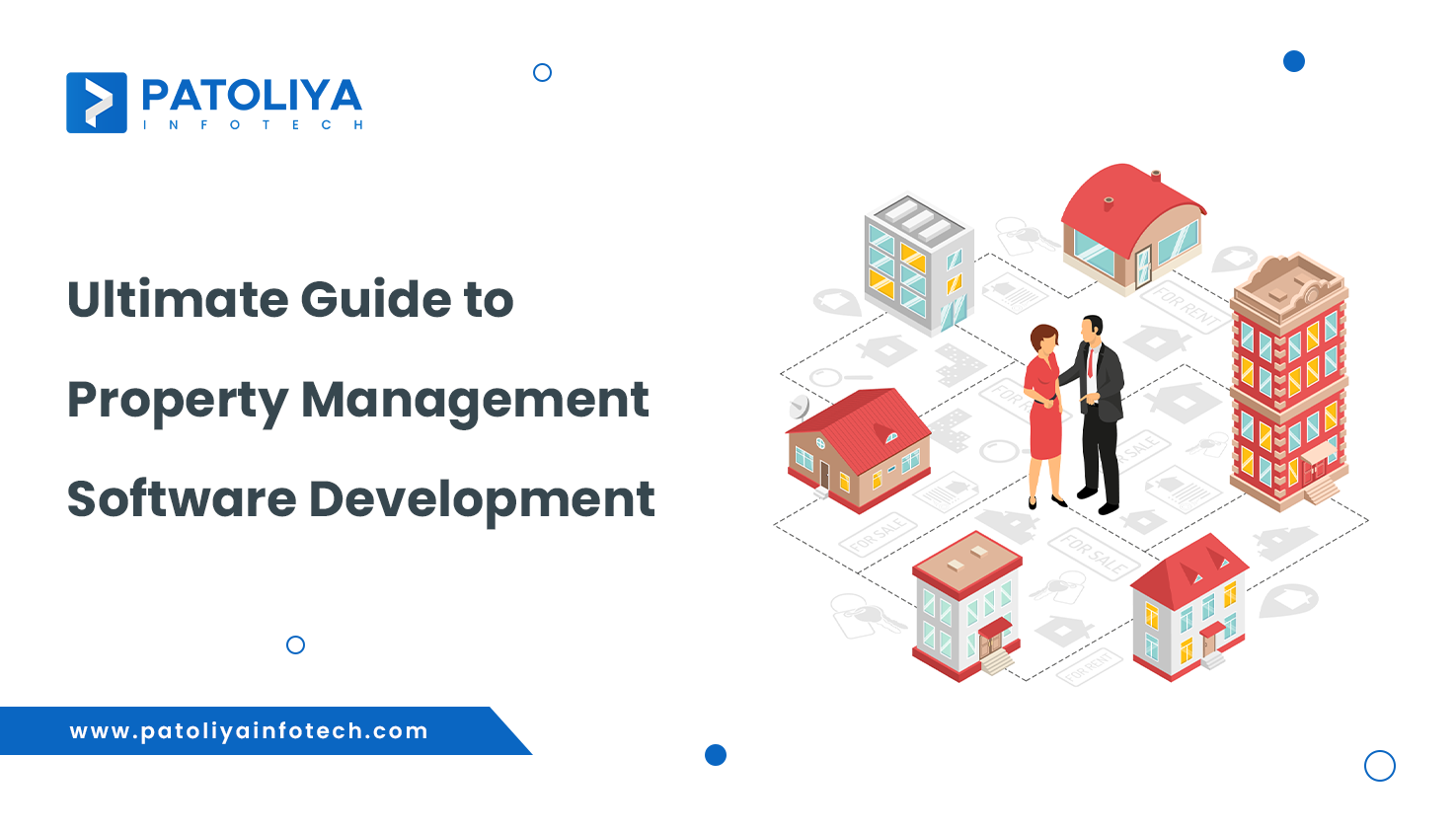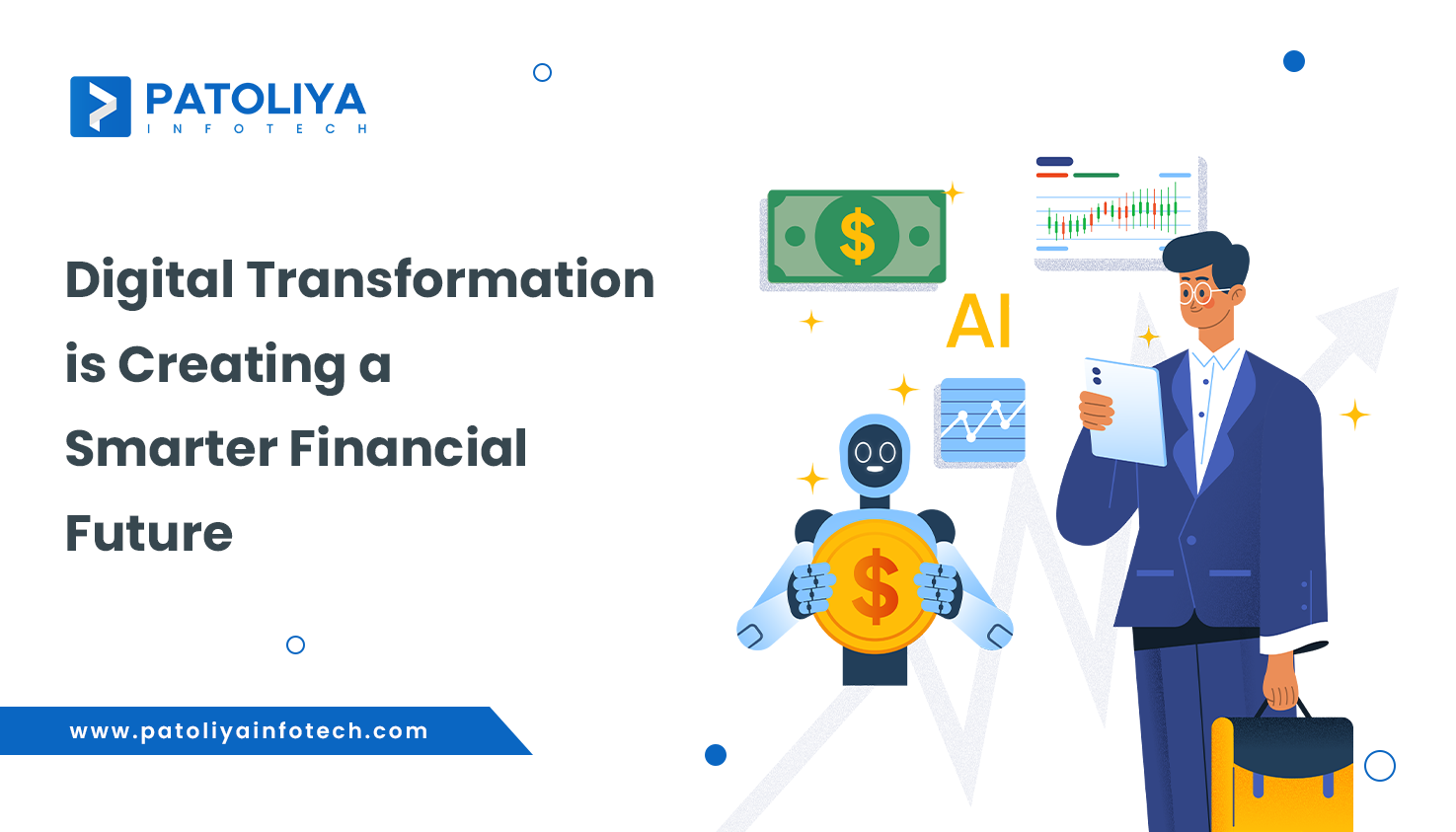Choosing the Optimal Software Stack for Your Business Requirements in 2024

Table of Contents
Given the importance of a Software stack in easing software development, testing, deployment, and smooth user experience, it is obvious that picking the right tech stack is essential for any software development company. However, the decision-making process might be difficult. The good news is that we have an all-inclusive guide to help you choose the proper tech stack for your projects!
With a dependable tech stack in place, businesses can streamline their software development endeavors, ensuring efficiency and effectiveness while reducing the likelihood of downtime and data breaches.
What exactly is a Technology Stack?
A technology stack, often referred to as a tech stack, is an assemblage of programming languages, frameworks, and tools utilized by a company or organization to design and operate their software applications. It is comprised of different layers, including the front-end, back-end, and database layers, tailored to meet specific project requirements, scalability demands, and the expertise of the development team.
The main objective of a tech stack is to create a consistent and organized methodology for software development, allowing developers to make the most of pre-existing tools, libraries, and frameworks in building efficient and reliable applications. In essence, a tech stack represents a collection of software components and infrastructure that collaborate harmoniously to bring a software product to life.
Moreover, creating software necessitates a creative approach that aligns with business objectives and facilitates the delivery of top-notch outcomes. This is precisely where the technology stack emerges, reshaping the structure and providing the means to achieve these goals.
Understanding the Technology Stack's Layers and Components
A technological stack consists of three key components that are required for its operation:
Client-side (frontend)
This includes the user interface and any components that are visible to users. HTML, CSS, JavaScript, and UI frameworks and libraries are all included.
Server-side (backend)
The backend is the application's logic and functionality that operate behind the scenes. It handles requests sent by the client. Backend technologies include numerous programming languages, web frameworks, servers, and operating systems.
Database
The database stores application data such as user profiles and product/software information. It guarantees that data is managed efficiently across the system.
What makes prioritizing the tech stack in the software development life cycle so crucial?
Undoubtedly, the software development life cycle (SDLC) stands as a pivotal process in crafting exceptional software. Its various stages, including planning, design, implementation, testing, and maintenance, collectively shape the final product's quality and success.
Of all these stages, the planning phase emerges as the crucial bedrock, laying the foundation for the entire journey. Collaborative efforts and brainstorming sessions are imperative to precisely define project goals and foster alignment among team members.
Notably, during this planning stage, the selection of the project's tech stack assumes paramount significance. The tech stack chosen must possess unwavering resilience and dependability, capable of meeting the product's demands effectively. Moreover, its scalability should empower seamless accommodation of future growth.
It's important to recognize that both front-end and back-end development necessitate distinct technologies to work harmoniously. Hence, meticulous consideration while choosing the tech stack is imperative to ensure the seamless integration of these technologies.
By making strategic decisions about the tech stack, you unlock the potential to tap into a wider user base, subsequently boosting sales, and achieving optimal resource utilization.
In conclusion, the tech stack's thoughtful selection within the SDLC profoundly impacts the overall success and sustainability of the software product.
Top Software Tech Stacks in Demand
Businesses are transitioning from traditional to modern software stacks as technology advances. These options are motivated by specific project requirements and serve specialized objectives. Although designing a custom stack for your project may look practical, there are standardized Software stacks available.
MERN stack
The MERN stack is the industry standard for web applications, including four fundamental technologies: MongoDB, ExpressJS, React, and NodeJS. The dynamic pair of NodeJS and ExpressJS boosts the backend domain, which is supplemented by React's frontend development prowess. Furthermore, MongoDB is an essential NoSQL database component of the MERN stack.
React enhances the stack by combining an extensive range of innovative front-end development tools and functions, resulting in the MERN stack as an all-encompassing solution for modern online application development. MERN's Javascript basis has made a major contribution to its fame as a famous tech stack.
MEAN stack
The MEAN stack is a powerful combination of four unique technologies: MongoDB, ExpressJS, Angular, and NodeJS. This software stack follows a three-tier architectural model, with Node and Express managing the backend. Meanwhile, Angular enables businesses to create cutting-edge web app frontends by utilizing MongoDB's excellent database capabilities. As a result, the MEAN stack remains a popular choice for developing dynamic and engaging online applications.
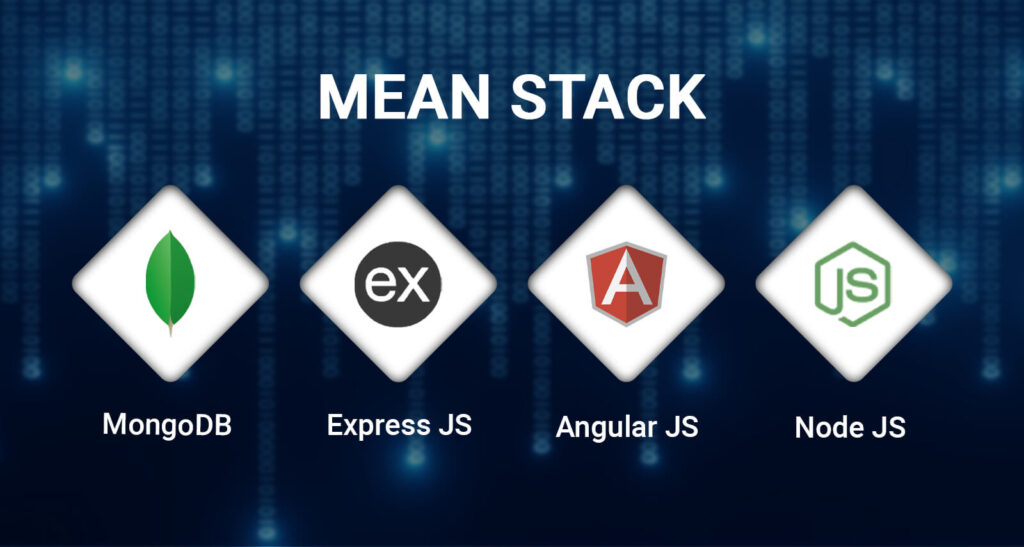
MEVN stack
MEVN stack stands for a variant of the MEAN stack, wherein Vue.js replaces Angular. Vue.js, a handy and versatile frontend framework, empowers the comprehensive full-stack functionality of the MEVN stack. Additionally, Vue.js offers pre-built additive APIs, enhancing the adaptability of component logic within the application.
The VueJs framework is notable for its exceptional simplicity, with a smooth learning curve that warmly welcomes beginners. Furthermore, it integrates well with other libraries and active projects, ensuring smooth integration.
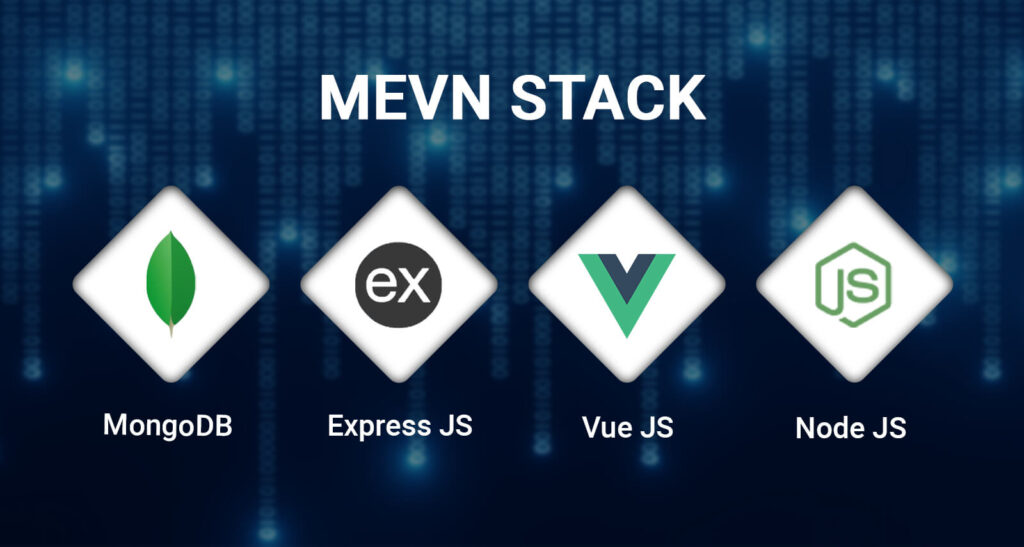
LAMP stack
The LAMP stack stands out among various software stacks due to its distinctiveness in excluding Javascript. Comprising four key components - Linux, Apache HTTP Server, MySQL, and Python - it sets itself apart. However, the "P" element in LAMP represents a trio of diverse scripting languages: PHP, Perl, and Python.
The LAMP stack's unrivaled combination of technologies provides it with exceptional versatility and potency, making it a top choice for many developers looking to build fast, scalable online applications.
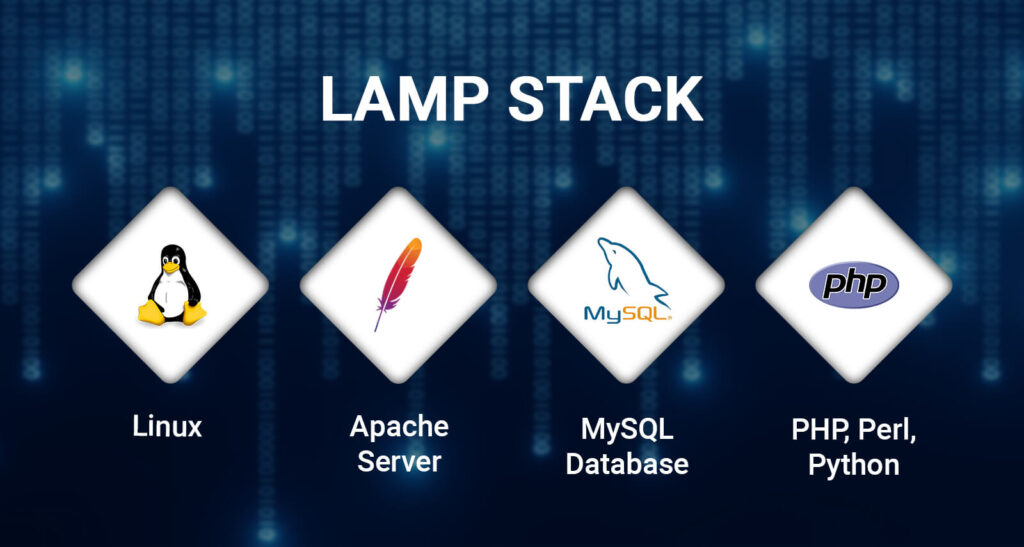
How to Select the Perfect Software Stack for Your Business in 2024
After understanding the importance of the tech stack and the numerous options at your disposal, you might be pondering on the appropriate Software Stack for your business in 2024.
No need to worry, we've got you covered.
Below, we'll delve into some valuable tips to help you choose the ideal tech stack that suits your business needs.
Time-to-Market in Software Development
In the realm of software development, the duration it takes to bring a product to market is of utmost importance. Businesses must carefully consider the time-to-market for software delivery, especially when facing tight deadlines for a software release. Opting for a Software stack that demands extensive development time would be impractical if it doesn't offer a faster feature delivery.
As a result, this aspect becomes critical for maintaining a competitive edge in a cutthroat market. Moreover, businesses need to factor in their existing technology and infrastructure to prevent costly implementation delays. However, achieving a reduced time-to-market necessitates a comprehensive understanding of all the essential steps and resources involved in the software delivery process.
Enhancing Scalability
In today's dynamic business sector, having a flexible and adaptable technological infrastructure is critical to success. Because market demands can change unexpectedly, the ability to easily adjust the Software stack to suit these swings becomes critical. An inflexible technology configuration, on the other hand, might lead to decreased efficacy and increased costs, affecting a company's financial success.
Various Project Requirements:
Project management necessitates the careful consideration of size and complexity. Each project possesses its own distinctiveness, demanding specialized treatment. Crucial aspects to weigh include data volume for processing, required capabilities, and project timelines.
Cost Optimization:
Choosing the appropriate tech stack is of utmost importance as it encompasses not just the project's budget and prerequisites but also its scalability and sustainable maintenance. A meticulously planned Software stack can expedite development processes and deliver improved performance efficiency.
Conclusion
To summarise, selecting the appropriate technology stack is a vital decision that requires careful consideration and study to arrive at the optimum solution. Several considerations must be considered when making this decision.
When starting a business, decisions about technology are critical since they might have long-term effects. The structure of your development team, incurred expenses, and time-to-market are all factors that may be influenced by the decisions you make now.
Obtain Professional Assistance Immediately!
When it comes to your software project's development needs, there's no need to search elsewhere – Full Scale has got you covered. Our team consists of skilled developers who are proficient in both web and mobile development, and fully prepared to take on any challenge that comes their way.
With their exceptional expertise and unwavering commitment to excellence, you can rest assured that your project is entrusted to capable hands.
So, why delay any further? Contact Us Now!

